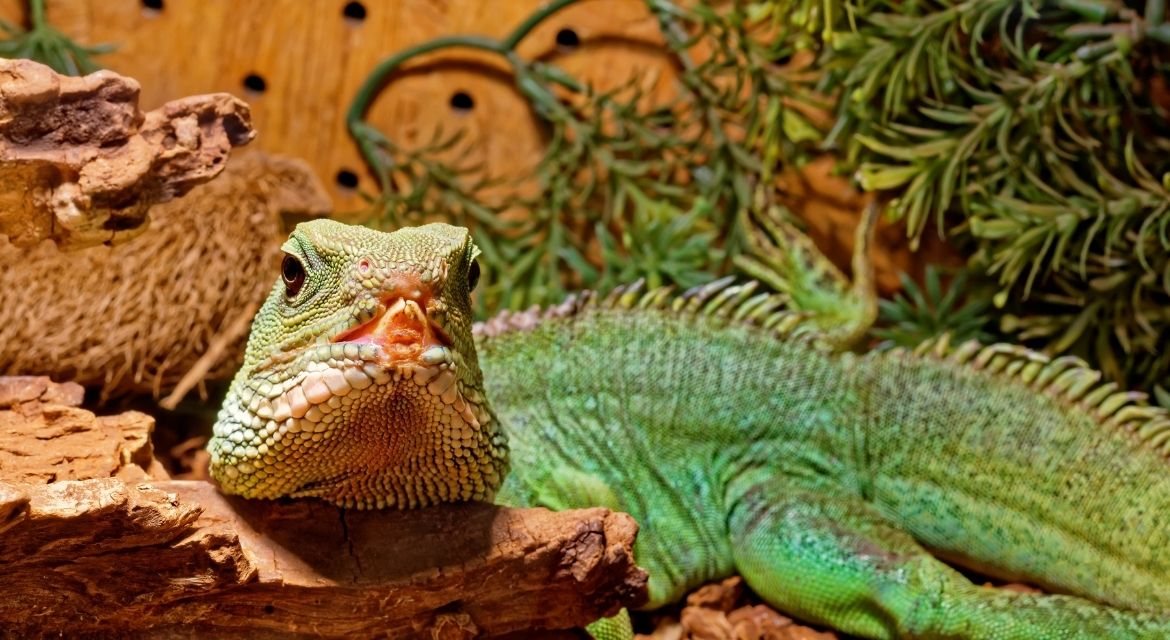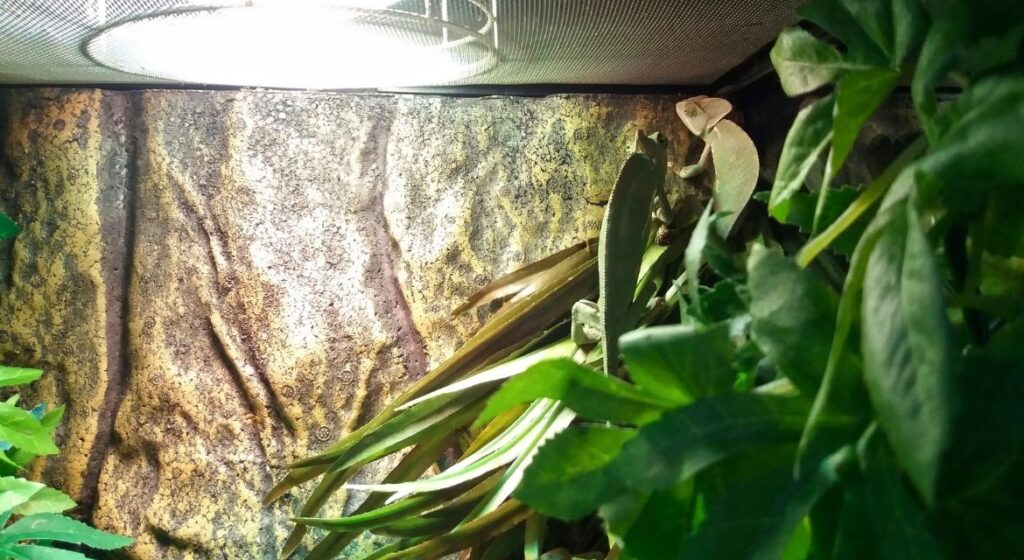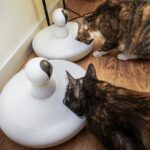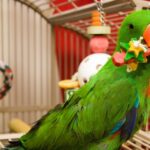 21 May
21 MayThe Ultimate Guide to Reptile Terrarium Setup: Creating the Perfect Habitat for Your Scaly Friend
Table of Contents
Creating the ideal environment for your reptilian companion goes far beyond simply placing them in a glass enclosure. A proper reptile terrarium setup is essential for ensuring your pet thrives physically and behaviorally. When done correctly, your reptile terrarium setup will mimic the natural habitat of your specific species, providing all the necessary elements for a healthy, active life.
Why Your Reptile Terrarium Setup Matters
The quality of your reptile terrarium setup directly impacts your pet’s overall health, longevity, and quality of life. Reptiles have evolved over millions of years to thrive in specific environmental conditions, and recreating these conditions in captivity is crucial for their wellbeing.
A poorly executed reptile terrarium setup can lead to numerous health issues including:
- Stress and decreased immune function
- Metabolic bone disease from improper lighting
- Respiratory infections from incorrect humidity
- Poor digestion from inadequate temperature gradients
- Abnormal behavior or lethargy
- Shortened lifespan
By investing time and research into your reptile terrarium setup, you’re providing your pet with the foundation needed for a healthy, enriching life. Let’s dive into the essential components that make up an ideal reptile terrarium setup.
Understanding Your Reptile’s Natural Habitat
Before purchasing a single piece of equipment for your reptile terrarium setup, research your specific species’ natural habitat. The desert environment needed for a bearded dragon differs dramatically from the tropical conditions required for a crested gecko.
Desert Dwellers
Species like leopard geckos, bearded dragons, and uromastyx come from arid regions where:
- Daytime temperatures are high
- Nighttime temperatures drop significantly
- Humidity levels are low (typically 20-40%)
- Substrate is often sandy or rocky
- Vegetation is sparse
- UVB exposure is intense
Your reptile terrarium setup for these species should feature a hot basking area (90-110°F depending on species), a cooler retreat area, minimal humidity, and strong UVB lighting.
Tropical Forest Inhabitants
Reptiles like crested geckos, day geckos, and many snake species thrive in tropical environments where:
- Temperatures are moderate and stable
- Humidity is high (typically 60-80%)
- Dense vegetation provides coverage
- Substrate retains moisture
- Light is filtered through canopy
- Climbing opportunities abound
A terrarium setup for these species requires higher humidity maintenance, moderate temperatures (75-85°F typically), more hiding spots, and climbing structures.
Grassland and Woodland Species
Ball pythons, corn snakes, and many terrestrial lizards come from woodland or grassland habitats featuring:
- Moderate humidity levels (40-60%)
- Temperature variations between sun and shade
- Abundant ground cover and hiding places
- Burrowing opportunities
- Seasonal variations
Your terrarium setup should accommodate these needs with proper temperature gradients and substrate suitable for burrowing.
Selecting the Appropriate Enclosure
The foundation of any successful terrarium setup begins with selecting the right enclosure. Several factors influence this decision:
Size Requirements
Unlike mammals, reptiles continue growing throughout much of their lives. Your terrarium setup should accommodate your pet’s adult size, not just their current dimensions.
As a general guideline:
- Small lizards (anoles, house geckos): Minimum 10-20 gallon terrarium
- Medium lizards (leopard geckos, bearded dragons): Minimum 40 gallon terrarium
- Large lizards (monitors, iguanas): Custom enclosures often measuring 6ft+ in length
- Small snakes (ball pythons, corn snakes): Minimum 20-40 gallon terrarium
- Large snakes (boas, pythons): Custom enclosures based on adult length
Remember that these are minimum requirements for a proper terrarium setup. Larger enclosures, when properly designed with adequate hiding spaces, are almost always better for your pet’s physical and psychological health.
Enclosure Materials
Your terrarium setup can utilize various materials, each with distinct advantages:
Glass Terrariums
- Excellent visibility
- Easy to clean and disinfect
- Maintains humidity well
- Heavy and breakable
- Poor insulation properties
PVC or Plastic Enclosures
- Lightweight and durable
- Superior insulation properties
- Available in various colors
- Less visibility than glass
- Can retain odors if not properly sealed
Wooden Enclosures
- Excellent insulation
- Natural appearance
- Customizable
- Requires waterproofing
- Harder to completely disinfect
Hybrid Enclosures
- Combine benefits of multiple materials
- Often feature glass fronts with wooden or PVC sides
- Provide excellent visibility while maintaining insulation
- Typically more expensive
For beginners, a glass terrarium often provides the simplest terrarium setup option. However, as you gain experience, you may prefer the insulation benefits of PVC or wooden enclosures, particularly for species with specific temperature requirements.
Ventilation Considerations
Proper airflow is a critical yet often overlooked aspect of terrarium setup. Too much ventilation can make maintaining humidity difficult, while too little can lead to stagnant air and respiratory issues.
- Desert species: Require more ventilation to maintain lower humidity
- Tropical species: Need controlled ventilation to retain humidity
- All species: Benefit from some air exchange to prevent bacterial/fungal growth
Screen tops, ventilation slots, or small fans might be incorporated into your terrarium setup depending on your specific needs.

Creating The Perfect Environmental Conditions
The most visually impressive reptile terrarium setup will fail if it doesn’t maintain appropriate environmental parameters. Let’s examine the essential environmental elements of a proper reptile terrarium setup.
Temperature Gradients: The Key to Thermoregulation
Reptiles are ectothermic (cold-blooded), meaning they regulate their body temperature through environmental means. Your reptile terrarium setup must provide a temperature gradient allowing your pet to thermoregulate by moving between warmer and cooler areas.
Creating a Proper Thermal Gradient in Your Reptile Terrarium Setup:
- Hot/Basking Zone: This area should be at the species-appropriate basking temperature (often 90-110°F for desert species, 80-90°F for tropical species).
- Intermediate Zone: The middle of your reptile terrarium setup should offer moderate temperatures.
- Cool Zone: The opposite end from the basking area should be significantly cooler (70-80°F typically) to allow the animal to cool down when needed.
Heating Equipment Options for Your Reptile Terrarium Setup:
- Heat Lamps: Provide both heat and light; create natural basking spots
- Ceramic Heat Emitters: Produce heat without light; ideal for nighttime
- Under-tank Heaters: Good for species that absorb heat from the ground
- Radiant Heat Panels: Excellent for larger enclosures or heat-sensitive species
- Deep Heat Projectors: Provide infrared-A and infrared-B heat that penetrates deeper than traditional bulbs
Your specific reptile terrarium setup may require one or a combination of these heating elements. Always use thermostats to regulate temperatures precisely and prevent overheating.
Lighting Systems: More Than Just Illumination
Proper lighting in your reptile terrarium setup serves multiple purposes beyond visibility:
UVB Lighting
Most diurnal (day-active) reptiles require UVB exposure to synthesize vitamin D3, which is essential for calcium metabolism. Without adequate UVB in your reptile terrarium setup, reptiles can develop metabolic bone disease a painful, debilitating, and often fatal condition.
UVB requirements vary by species:
- Desert species: High UVB requirements (10-12% UVB bulbs)
- Tropical species: Moderate UVB (5-8% UVB bulbs)
- Crepuscular/Nocturnal species: Minimal or no UVB requirements
UVB bulbs should be replaced every 6-12 months as part of routine reptile terrarium setup maintenance, as their output diminishes over time even when they still emit visible light.
UVA and Visible Light
A complete reptile terrarium setup also includes UVA and visible light spectrum, which influences:
- Activity cycles
- Feeding behavior
- Breeding responses
- Psychological wellbeing
Day/Night Cycles
Your reptile terrarium setup should mimic natural photoperiods:
- 12-14 hours of light for most species
- Seasonal adjustments for breeding
- Complete darkness at night (no colored night bulbs)
Humidity Management: The Moisture Balance
Maintaining appropriate humidity levels is another critical aspect of proper reptile terrarium setup. Incorrect humidity can lead to respiratory infections, shedding problems, and dehydration.
Humidity Requirements by Habitat Type:
- Desert reptiles: 20-40% humidity
- Temperate species: 40-60% humidity
- Tropical species: 60-80% humidity
- Amphibians: Often 80%+ humidity
Humidity Control Methods in Your Reptile Terrarium Setup:
- Water Features: Small water dishes increase ambient humidity
- Misting Systems: Manual or automatic systems add moisture
- Humid Hides: Localized high-humidity retreats filled with damp moss
- Substrate Choices: Moisture-retaining substrates like coconut fiber
- Ventilation Adjustment: Reducing airflow helps retain humidity
Monitor humidity levels in your reptile terrarium setup using a reliable hygrometer, and adjust as needed to maintain species-appropriate levels.
Substrate Selection: The Foundation of Your Reptile Terrarium Setup
The substrate forms the literal foundation of your reptile terrarium setup and serves multiple purposes:
- Provides a comfortable surface for movement
- Facilitates natural behaviors like digging
- Helps maintain humidity
- Absorbs waste products
- Contributes to aesthetic appeal
Choosing the right substrate for your reptile terrarium setup depends largely on your pet’s natural habitat and behaviors.
Desert Reptile Substrates
For arid environments in your reptile terrarium setup:
- Sand Mixes: Blend play sand with organic soil for safe burrowing
- Excavator Clay: Allows for burrow construction that holds its shape
- Paper Towels: Simple, inexpensive option for quarantine setups
- Reptile Carpet: Reusable and digestively safe option
Tropical Reptile Substrates
For humid environments in your reptile terrarium setup:
- Coconut Fiber: Excellent humidity retention
- Cypress Mulch: Natural appearance with good moisture properties
- Bioactive Substrate Mixes: Self-sustaining ecosystem with beneficial microorganisms
- Sphagnum Moss: Ideal for high-humidity areas or humid hides
Substrates to Avoid in Your Reptile Terrarium Setup
Some materials pose health risks and should never be used in your reptile terrarium setup:
- Pure Calcium Sand: Causes impaction when ingested
- Cedar and Pine Shavings: Contain harmful oils and phenols
- Cat Litter: Contains clumping agents harmful if ingested
- Walnut Shell: Sharp edges can cause internal damage
Decorations and Enrichment: Beyond the Basics
A complete reptile terrarium setup includes furnishings that serve both functional and enrichment purposes.
Essential Habitat Features
Every reptile terrarium setup should include:
Hide Boxes
- Minimum of two hides (one in warm area, one in cool area)
- Snug enough to contact the reptile’s body for security
- Appropriate to the animal’s size
- Made from safe materials (commercial hides, cork bark, ceramic fixtures)
Climbing Structures (for arboreal species)
- Stable branches or commercially available products
- Varied diameters for foot health
- Secured to prevent collapse
- Positioned to utilize vertical space in the reptile terrarium setup
Basking Platforms
- Flat surfaces for absorbing heat
- Positioned appropriate distance from heat source
- Heat-resistant materials
- Large enough for the entire animal to rest upon
Creating Environmental Enrichment
An advanced reptile terrarium setup provides mental stimulation through:
- Varied Topography: Different levels and textures encourage exploration
- Novel Objects: Occasionally introducing new safe items creates interest
- Foraging Opportunities: Hiding food encourages natural hunting behaviors
- Visual Barriers: Creating separate “rooms” within your reptile terrarium setup
- Sensory Enrichment: Different textures and surfaces for tactile stimulation
Live Plants vs. Artificial
Both live and artificial plants can enhance your reptile terrarium setup:
Live Plants Benefits:
- Create natural microhabitats
- Help maintain humidity
- Provide natural shelter
- Improve air quality
- Contribute to bioactive setups
Artificial Plant Benefits:
- No risk of pesticide exposure
- Cannot be destroyed by digging
- Require no maintenance
- Can be disinfected completely
If using live plants in your reptile terrarium setup, research species that are non-toxic to reptiles and compatible with your environmental conditions.
Bioactive Reptile Terrarium Setup: The Self-Sustaining Ecosystem
A bioactive reptile terrarium setup represents the pinnacle of naturalistic habitat creation. These systems incorporate:
- Live substrate with beneficial microorganisms
- Custodian invertebrates (isopods, springtails) that consume waste
- Live plants that utilize waste nutrients
- Natural cycling of materials
Benefits of a bioactive reptile terrarium setup include:
- Reduced maintenance requirements
- More naturalistic environment
- Healthier substrate conditions
- Enrichment opportunities through natural processes
- Better odor control
Creating a bioactive reptile terrarium setup requires more initial research and investment but can simplify long-term maintenance while providing superior habitat quality.
Feeding and Water Stations
Your reptile terrarium setup should include designated areas for feeding and hydration.
Water Provisions
All reptiles require access to clean water, though delivery methods vary:
- Water Bowls: Provide for drinking and soaking; size appropriate to species
- Water Features: Moving water for semi-aquatic species
- Misting Systems: Water droplets for species that drink from foliage
- Drip Systems: Slow water delivery for chameleons and other specialized drinkers
Water containers should be easily cleaned and heavy enough to prevent tipping. Position them in your reptile terrarium setup where they won’t be contaminated by feces or substrate.
Feeding Areas
Designated feeding stations in your reptile terrarium setup help with:
- Monitoring food intake
- Preventing substrate ingestion
- Reducing prey escape (for insectivores)
- Separating food from waste areas
- Conditioning the animal to regular feeding routines
Monitoring Equipment for Your Reptile Terrarium Setup
Precision is essential when maintaining a reptile terrarium setup. These tools help ensure optimal conditions:
- Thermometers: Digital thermometers with probes provide accurate readings at different points in your reptile terrarium setup
- Hygrometers: Measure ambient humidity levels
- Thermostats: Control heating elements to prevent dangerous temperature fluctuations
- Timers: Automate lighting cycles for consistency
- UVB Meters: Measure actual UVB output to ensure proper exposure
Technology has advanced substantially, with many reptile terrarium setup monitoring systems now offering smartphone connectivity and alerts when parameters fall outside optimal ranges.
Reptile Terrarium Setup Maintenance
Regular maintenance ensures your reptile terrarium setup remains clean and functional:
Daily Maintenance
- Remove visible waste and uneaten food
- Check temperature and humidity levels
- Ensure water is clean and available
- Observe animal for signs of health issues
- Spot-clean soiled substrate
Weekly Maintenance
- Deep clean water dishes
- Wipe down glass/walls
- Replace heavily soiled substrate sections
- Check functionality of equipment
- Disinfect food dishes
Monthly Maintenance
- Inspect UVB bulbs (replace every 6-12 months)
- Clean and check all heating elements
- Rotate or replace enrichment items
- Evaluate substrate condition
- Thoroughly clean and disinfect decor as needed
Quarterly Maintenance
- Complete substrate replacement (unless bioactive)
- Deep clean entire terrarium setup
- Check and replace worn equipment
- Reassess habitat design for growing animals
- Update your terrarium setup based on seasonal needs
Common Reptile Terrarium Setup Mistakes to Avoid
Even experienced keepers can make these common errors in their terrarium setup:
- Inadequate Size: Selecting an enclosure too small for the animal’s needs
- Improper Temperature Gradient: Failing to provide both warm and cool areas
- Insufficient Hiding Places: Not providing enough secure retreats
- Incompatible Cohabitation: Housing species together inappropriately
- Inadequate UVB: Using incorrect bulbs or placing them behind glass/plastic
- Poor Substrate Choice: Using materials that cause impaction or injury
- Neglecting Humidity: Failing to monitor and maintain proper moisture levels
- Improper Cleaning Products: Using toxic chemicals near sensitive reptiles
- Overcrowding: Adding too many décor items, limiting movement space
- Ignoring Species-Specific Needs: Using a one-size-fits-all terrarium setup approach
Species-Specific Reptile Terrarium Setup Guidelines
While general principles apply broadly, each species has unique reptile terrarium setup requirements:
Bearded Dragon Terrarium Setup
- Minimum 4’x2’x2′ enclosure for adults
- Basking spot 95-105°F
- Cool side 75-85°F
- 10-12% UVB tube spanning 2/3 of enclosure
- 20-40% humidity
- Climbing branches and basking platforms
- Substrate options: reptile carpet, paper towel, or sand/soil mix
Leopard Gecko Terrarium Setup
- Minimum 20-gallon long enclosure
- Warm side 88-92°F
- Cool side 75-80°F
- Minimal UVB requirements
- 30-40% humidity with humid hide
- Multiple hide boxes
- Substrate options: paper towel, reptile carpet, or soil/sand mix
Ball Python Terrarium Setup
- Minimum 40-gallon enclosure for adults
- Warm side 88-92°F
- Cool side 75-80°F
- No special UVB requirements
- 50-60% humidity
- Minimum of three secure hides
- Substrate options: cypress mulch, coconut fiber, or reptile-specific bedding
Crested Gecko Terrarium Setup
- Vertical orientation enclosure (18″x18″x24″ minimum)
- Temperature 72-78°F
- No basking spot needed
- 60-80% humidity
- Abundant climbing branches and foliage
- Substrate options: coconut fiber, ABG mix, or bioactive setup
Advanced Reptile Terrarium Setup Techniques
As you gain experience, consider these advanced approaches to terrarium setup:
Automated Systems
Modern technology allows for sophisticated terrarium setup automation:
- Programmable misting systems
- Temperature controllers with day/night cycling
- Humidity regulation systems
- Smart monitoring with phone alerts
- Timed lighting adjustments for seasonal changes
Specialized Lighting
Beyond basic UVB, advanced reptile terrarium setup may include:
- Full-spectrum LED systems
- Dawn/dusk simulation lighting
- Seasonal photoperiod adjustment
- Species-specific nanometer wavelength optimization
- Plant growth lighting for live terrarium plants
Naturalistic Habitat Creation
The gold standard in reptile terrarium setup incorporates:
- Region-specific plant species
- Natural rock formations
- Water features mimicking natural streams or pools
- Substrate layers simulating soil horizons
- Climate fluctuations matching natural seasonal changes
Conclusion: The Rewarding Journey of Reptile Terrarium Setup
Creating the perfect reptile terrarium setup is both a science and an art. While it requires research, investment, and ongoing attention, the rewards are substantial a thriving, active reptile displaying natural behaviors in an environment tailored precisely to its needs.
Remember that your terrarium setup will evolve over time as you learn more about your specific animal’s preferences and behaviors. The best keepers continually refine their approaches, incorporating new research and techniques into their reptile terrarium setup practices.
By prioritizing your pet’s biological needs in your terrarium setup, you’re creating the foundation for a healthy relationship that can last for decades with many reptile species. The effort invested in proper terrarium setup pays dividends in reduced veterinary costs, increased animal activity, and the satisfaction of providing exemplary care.
Whether you’re setting up your first leopard gecko enclosure or designing an elaborate bioactive vivarium for a rare species, the principles outlined in this guide will help ensure your errarium setup meets and exceeds the needs of your scaly companion.
You May Also Like :
How to Stop Dog Barking: The Complete Guide to a Quieter, Happier Pet
Comprehensive Guide to Interactive Cat Toys: Keeping Indoor Cats Happy and Healthy
Dog Grooming at Home: The Complete Guide for Dog Owners
10 Essential Dog Training Tips Every New Puppy Owner Should Know
How to Take Care of a Pet: Essential Guide to Responsible Pet Ownership
The Ultimate Guide to Cat Playtime: Why Play Is Essential for Your Feline’s Health and Happiness
How to Successfully Work from Home with Pets: A Comprehensive Guide
The Mental Health Benefits of Having a Dog: What Every Pet Owner Should Know
How to Groom a Puppy for the First Time: Step-by-Step Guide
Quick Solutions for Daily Pet Care: Simple Strategies for a Happier Pet and Easier Routine




